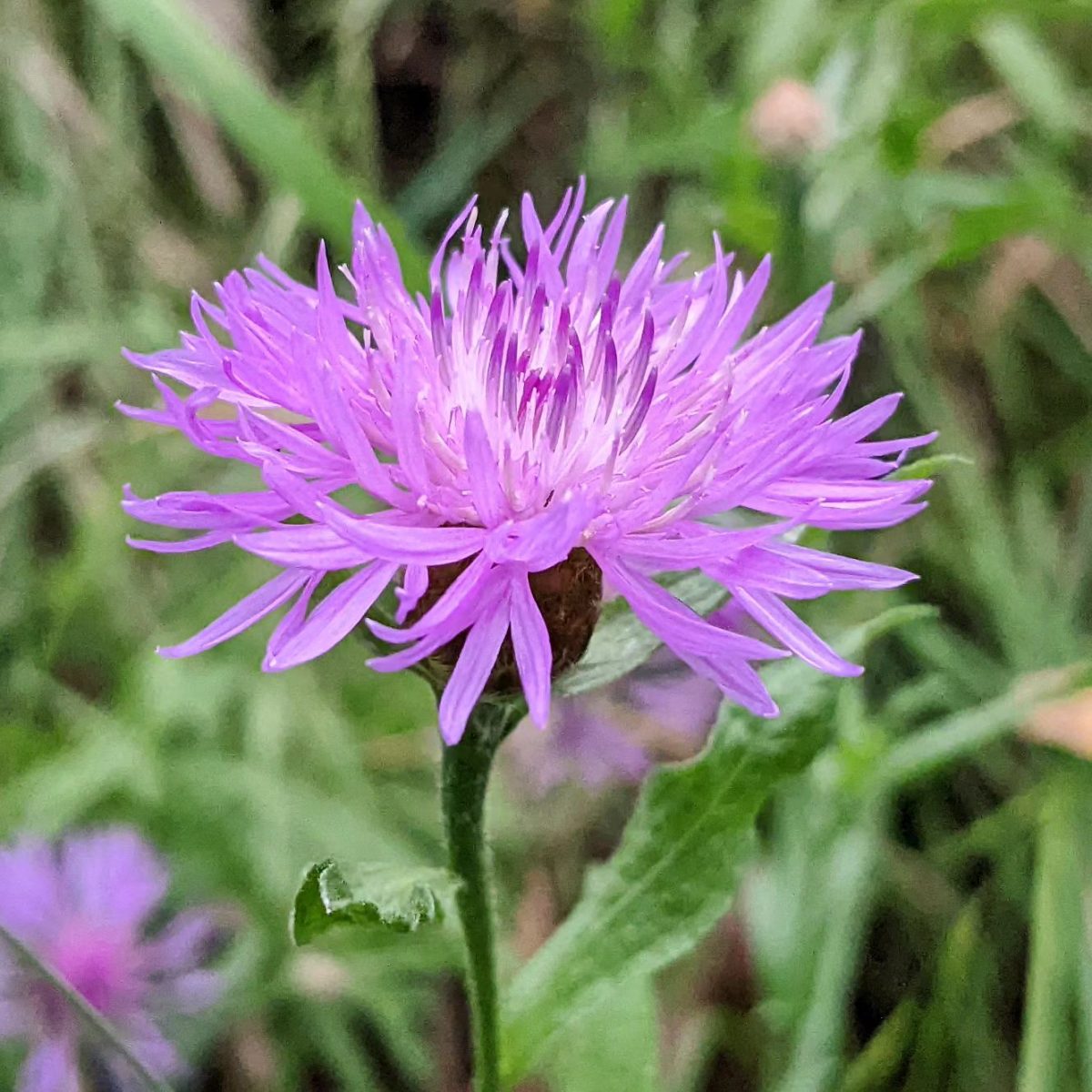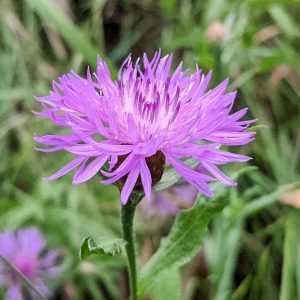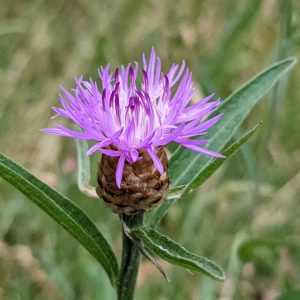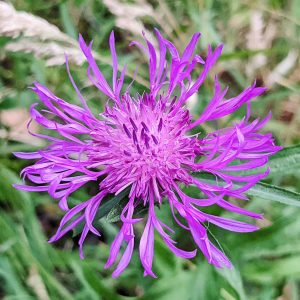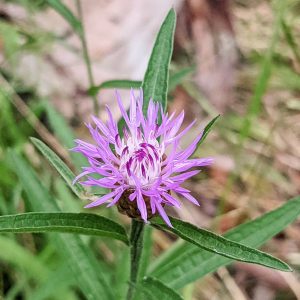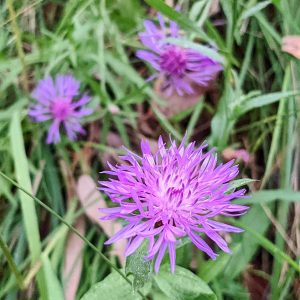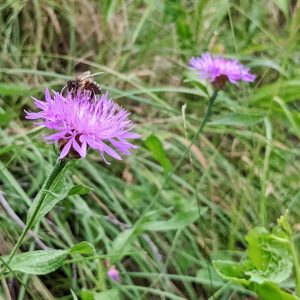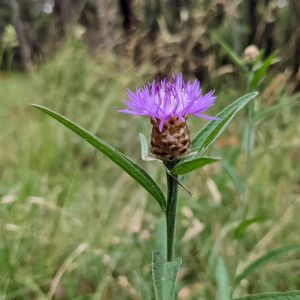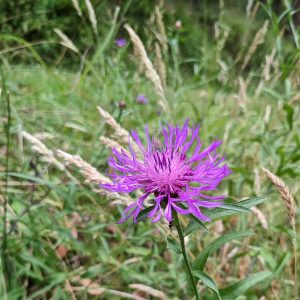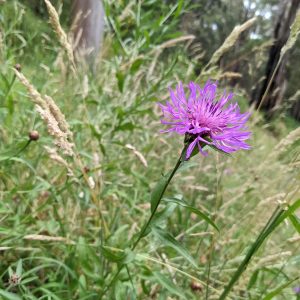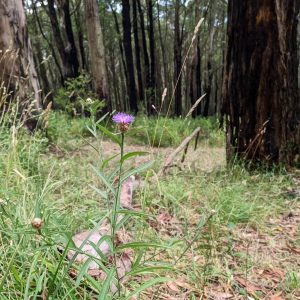Brown Knapweed (Centaurea jacea), an uncommon European weed of fertile pasture and degraded grassy woodlands.
Due to its similarity to the more frequent Black Knapweed (C. nigra) and to a naturally occurring hybrid, Meadow Knapweed (C. xmoncktonii), the Brown Knapweed species is possibly underrecorded in Victoria.
Brown Knapweed can be differentiated from Black Knapweed by its prominent, ray-like peripheral florets, and from the hybrid by the terminal shape of its phyllaries (involucral bracts), which are wider than they are long (the hybrid is the reverse). The other distinction is that the green parts of the phyllaries are almost completely hidden in Brown Knapweed, and more exposed in the others.
Black Knapweed saw occasional historical use in English gardens, and has become popular more recently in the UK with the wide embrace of perennial wildflower gardening. However, it appears more likely that all three knapweeds arrived in Victoria principally as contaminants in imported seed. Both species (and their hybrid) require meadow-like conditions, fertile soils and good annual rainfall, limiting their range in this state to select locations with the right environmental conditions.
There are records of Brown Knapweed at South Australia (1904) and from Queensland, where it became established on the south-west outskirts of Brisbane in the c. 1960s. In Victoria, the species was collected in 1920 at Neerim, west of Baw Baw, and is known from recent scattered records in the central Dandenongs.
Black Knapweed is more broadly established in Victoria, with populations around Ballarat, the Dandenongs, Warragul and in the north-east, particularly around Bright where it was first recorded in 1910. The hybrid was first collected in the Dandenongs at Ferny Creek in 1950, and then again to the east around Sassafras and Olinda in the 2000s; it is also known from Gippsland and Bright.
View Original Post on Instagram
Search for information about Centaurea jacea in the Flora of Victoria
View information and occurrences of Centaurea jacea on the Atlas of Living Australia
